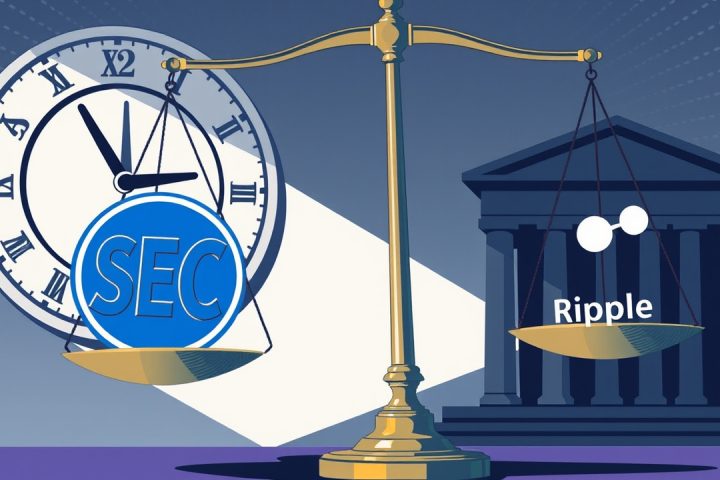Ethereum’s Evolution: A Decade of Service
Recent reflections on Ethereum’s evolution highlight a decade of uninterrupted service, marking a significant anniversary for this pioneering blockchain network. As it approaches its tenth year, Ethereum has proliferated from a mere experimental platform into a fundamental pillar of the blockchain ecosystem. Nevertheless, the landscape has dramatically transformed, with formidable challengers like Solana, Avalanche, and other emerging layer-1 solutions vying for the spotlight. These competitors boast claims of enhanced transaction speeds, reduced fees, and an overall improved user interface, thereby elevating the stakes in the blockchain arena.
Governance and Reformative Capabilities
However, amid ongoing discussions about transaction efficiency and associated costs, a crucial aspect merits attention—the robust governance and reformative capabilities Ethereum has put forth. Despite being subject to market fluctuations, Ethereum’s proactive measures in governance and fiscal management set a benchmark for industry rivals, who must step up to achieve a similar level of trust and user adoption.
Strategic Initiatives and Future Commitments
Earlier this year, the Ethereum Foundation delineated an evolved treasury policy intended to interlink its holdings of ETH with operational expenditure and financial requirements. Hsiao-Wei Wang, co-executive director of the Foundation, emphasized that the years 2025 and 2026 are poised to be transformative for Ethereum, necessitating a heightened commitment to key initiatives. In line with this strategy, the Foundation plans to release regular reports detailing its assets, investment outcomes, and advancements, illustrating Ethereum’s maturation as it transitions from its experimental roots to a robust infrastructure supporting a diverse global community of projects and enterprises.
Accountability and Transparency in Governance
Governance has emerged as core to Ethereum’s strategy for maintaining accountability and ensuring its future sustainability. This stands in stark contrast to many of its counterparts, where governance practices often lack depth or transparency. In this evolving landscape, Ethereum’s dedication to a transparent operating framework serves not merely as a beneficial asset but as a critical necessity to navigate the industry’s complex evolution. The larger crypto ecosystem needs to adopt similar transparency; without it, the viability of new protocols may be compromised, succumbing to the pressures of market dynamics.
Challenges and Opportunities in the Blockchain Landscape
While Ethereum continues to be central to the development of web3, its influence extends beyond simply providing developer-friendly smart contracts. Competing blockchains like Solana and Avalanche are positioning themselves as rapid and cost-effective alternatives, but they risk losing ground if they overlook their governance and transparency blind spots. The influx of competition is not mere rivalry; it represents an opportunity for Ethereum to rigorously address fundamental questions: How can it maintain decentralization yet remain user-friendly? How can scalability be achieved without sacrificing principles? Rather than evading these challenges, Ethereum has embraced them, fostering open dialogues and community engagement.
The Importance of Fiscal Responsibility
The significance of fiscal responsibility and governance cannot be overstated; these principles are essential for web3’s broader legitimacy and appeal. Regrettably, the sector is often marred by scandals involving fraudulent schemes and transient fads lacking substantive products. Ethereum’s commitment to introspection and reform is a testament to the necessity of serious governance, one that is essential to building lasting infrastructures.
Addressing Centralization in Governance
While Ethereum sets an example, it remains a unique case within the layer-1 landscape, with many networks still grappling with governance and transparency challenges. The decision-making process in various protocols typically occurs behind closed doors, resulting in a lack of communication regarding the outcomes or rationales of important decisions. In some proof-of-stake environments, governance is further centralized among a select group of validators, countering the core principle of blockchain decentralization.
To combat such centralization, protocols should adopt models of governance akin to corporate board meetings, where discussions are documented and made accessible to the wider community. Publishing voting records would help ensure accountability, thereby mitigating the risk of unpopular decisions being pushed through without broader scrutiny.
Conclusion: A Framework for Future Success
By openly sharing its operational strategies, Ethereum provides an invaluable framework for rivals to address their governance and financial shortcomings, potentially saving them from costly missteps. Long-term prosperity in the realm of web3 will favor networks that establish themselves on the foundation of credibility—an invaluable asset in this sector. As Ethereum navigates its own challenges, the insights gleaned will echo throughout the industry, guiding projects toward sustained relevance or leading others to fade amidst the noise of hype.




